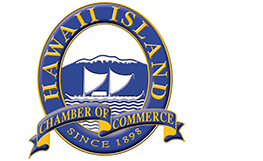The Role of Zoning in Hawaii’s Housing Crisis
Ron Terry, the owner of Geometrician Associates, put together a presentation on the Role of Zoning in Hawaii’s Housing Crisis for the last GAC meeting held on February 15. He invited Trey Gordner, the Director of the Hawaii Zoning Atlas and Sterling Higa, the Executive Director of Housing Hawaii’s Future to join him. It was an informative and engaging discussion of the housing challenges in the islands, and it can be viewed here.
Ron started by discussing Chuck Morone’s (strongtowns.org) concept of the growth Ponzi scheme and its effects on a sustainable community. Basically the idea is that urban sprawl creates future budget issues by having more roads to fix than taxes collected in the areas that need maintenance. The options to avoid this predicament are to 1) Keep growing, 2) Raise taxes, or 3) Cut services. Ron’s proposed fixes included greater density, eliminating roadblocks related to minimum lot size, setbacks, and parking, and allowing non-conforming use. The idea is to build more in areas that already have water, wastewater, and road infrastructure.
Trey talked about the history of zoning and emphasized that the housing crisis is a policy choice. Zoning excludes by design: it is easier to build single family homes, that only people with money can afford, than multi-unit dwellings. The results are a 40% increase in housing costs in the last 2 years, the highest rental rates in the nation, and double the rate of homelessness compared to the rest of the country. He echoed Ron’s call of allowing more types of housing (duplexes, triplexes, etc.), enable mixed use communities, reduce minimum lot size, reduce/eliminate parking minimums, simplify requirements and processes for ADUs (accessory dwelling units), and allow manufactured and modular homes. He did not have time to show us the Hawaii Zoning Atlas (hawaiizoningatlas.com), but he pointed out that Hawaii County has 108 different land use designations with 95% of the land falling into agriculture, government, or open space. He noted that “concerned citizens have a moral responsibility to propose and support reform,” and one way to do this is by giving feedback on the County General Plan which lays out what the future of our community should be. The public comment period ends on April 1, so do it soon!
Sterling discussed Hawaii’s rapidly aging population and population shrinkage. Only Hawaii County is still growing as it is the one island that is still somewhat affordable. The cost of living, with housing being the biggest roadblock, is creating a shortage of workers on all islands. One example he gave is that one quarter of all Maui County jobs are vacant. His goal is to make Hawaii family friendly by reducing the cost of living (housing, transportation, education/childcare, and food) and improving quality of life (housing near jobs and mixed-use communities). We want to make it so our children and grandchildren can afford to stay. One way to do this is to prioritize walkable, livable communities. An interesting statistic he shared is that vehicle miles travelled is the biggest predictor of community health. Some of the solutions he laid out included:
- Increase approval speed for projects.
- Encourage adaptive reuse and development, like converting commercial structures to residential.
- Seek innovative financial models, like community land trusts.
- Allow workforce housing conservancies with social impact investing.
- Invest in infrastructure with the following with the following criteria.
- Will it support a pattern of development for our grandchildren?
- Will it support economic activity?
- Will it benefit the general public or only a narrow elite?
All three speakers stressed making your voice heard – “Housing policy is so rooted in our status as social animals, and so dependent on collective action, that there is no way to change it without first changing ourselves.”


Recent Comments